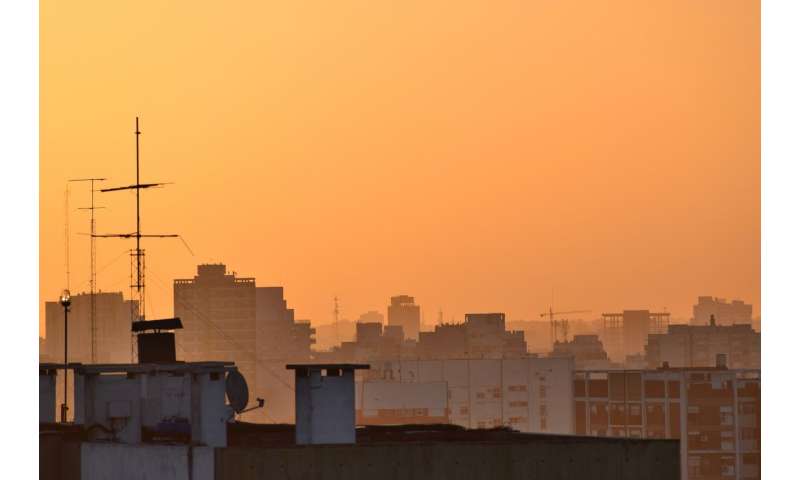
Credit: CC0 Public Domain
A small team with members from the University of Virginia, Stanford University, and the U.S. Census Bureau has found that despite laws enacted to reduce unequal distribution of emissions of airborne particulate matter smaller than 2.5 µm in diameter (PM2.5) in the U.S., disparities remain. In their paper published in the journal Science, the group analyzed data over the past several decades to learn more about air quality in the U.S. Lala Ma, with the University of Kentucky, has published a Perspective piece on the work done by the team in the same journal issue.
Over the past several decades, lawmakers in the U.S. have responded to concerns about air pollution, particularly in areas around large cities. The result has been a host of new laws forcing pollution-producing entities to reduce emissions, including car makers. Because of such laws, pollution levels in the U.S. have fallen dramatically. In the late 1970s, researchers noted that poorer people were impacted more severely by air pollution than rich people. They lived closer to pollution-producing plants and often wound up downwind of such major polluters as coal fired power plants. The federal government took notice of these disparities, and in 1981, began requiring companies to add environmental justice as part of cost-benefit analyses when making business decisions. In this new effort, the researchers sought to find out if the establishment of such rules had any impact on air pollution disparities.
The work by the team involved obtaining and analyzing 36 years of air pollution data compiled by government entities. They determined that air pollution of all kinds has been greatly reduced, including PM2.5. But they also concluded that those parts of the country that were the most polluted in the early 1980s were still the most polluted in the late 2000s. And those that were the least polluted were still the least polluted. They also found that income differences had remained roughly the same, as well. Thus, despite enacting legislation aimed at unfair distribution of air pollution, the poor were still more likely to live in areas that were the most heavily polluted, while the rich continued to breathe much cleaner air.
Explore further Fine-particle air pollution has decreased across the US, but poor and minority communities are still the most polluted
A small team with members from the University of Virginia, Stanford University, and the U.S. Census Bureau has found that despite laws enacted to reduce unequal distribution of emissions of airborne particulate matter smaller than 2.5 µm in diameter (PM2.5) in the U.S., disparities remain. In their paper published in the journal Science, the group analyzed data over the past several decades to learn more about air quality in the U.S. Lala Ma, with the University of Kentucky, has published a Perspective piece on the work done by the team in the same journal issue.
Over the past several decades, lawmakers in the U.S. have responded to concerns about air pollution, particularly in areas around large cities. The result has been a host of new laws forcing pollution-producing entities to reduce emissions, including car makers. Because of such laws, pollution levels in the U.S. have fallen dramatically. In the late 1970s, researchers noted that poorer people were impacted more severely by air pollution than rich people. They lived closer to pollution-producing plants and often wound up downwind of such major polluters as coal fired power plants. The federal government took notice of these disparities, and in 1981, began requiring companies to add environmental justice as part of cost-benefit analyses when making business decisions. In this new effort, the researchers sought to find out if the establishment of such rules had any impact on air pollution disparities.
The work by the team involved obtaining and analyzing 36 years of air pollution data compiled by government entities. They determined that air pollution of all kinds has been greatly reduced, including PM2.5. But they also concluded that those parts of the country that were the most polluted in the early 1980s were still the most polluted in the late 2000s. And those that were the least polluted were still the least polluted. They also found that income differences had remained roughly the same, as well. Thus, despite enacting legislation aimed at unfair distribution of air pollution, the poor were still more likely to live in areas that were the most heavily polluted, while the rich continued to breathe much cleaner air.
Explore further Fine-particle air pollution has decreased across the US, but poor and minority communities are still the most polluted
More information: Jonathan Colmer et al. Disparities in PM2.5 air pollution in the United States, Science (2020). DOI: 10.1126/science.aaz9353
Journal information: Science
No comments:
Post a Comment